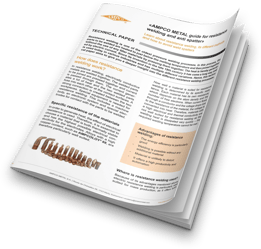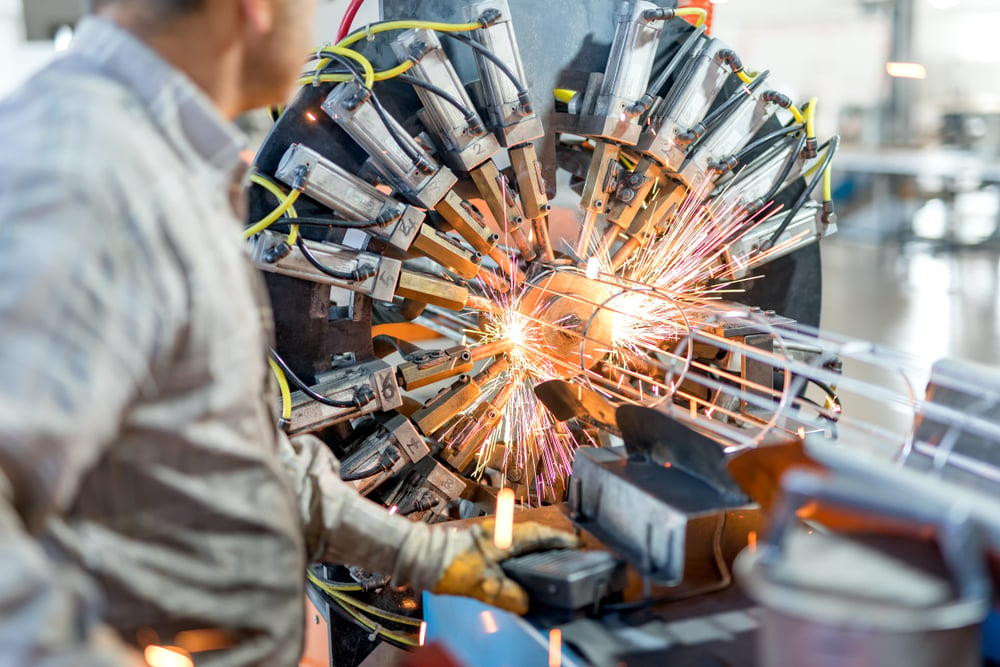The RWMA classification system is used in resistance welding to select the appropriate filler metal for a specific application. By choosing the appropriate RWMA class, engineers and welders can ensure consistency, quality, efficiency, and cost savings.
RWMA classes are standards used in the resistance welding industry to classify the composition and properties of materials used in welding operations, for example, welding electrodes. The RWMA classification system provides a standardized method for identifying and selecting the appropriate material for a specific welding application. The classes are based on the chemical composition and mechanical properties of the material and are intended to provide guidance on the suitability of the material for a particular welding application.
There are four RWMA classes, each with its own specific properties and characteristics:
- Class 1: A group of copper alloys with good strength and high electrical conductivity. Often used to weld aluminum and other good conductors.
- Class 2: A group of copper alloys with even stronger properties than Class 1. Often used for high-production operations.
- Class 3: Heat-treatable copper alloys with a combination of high tensile strength and good electrical and thermal conductivity. Frequently used for inserts, die casing, or seam welder bushings.
- Class 4: Beryllium-copper alloys with extremally high hardness and compressive strength. Often used for projection welding, flash welding, and butt-welding applications.
What is the use of RWMA classes?
RWMA classes aim to help find and select the appropriate material for a specific welding application and therefore can help to ensure the quality of the weld, increase efficiency, and reduce costs.
This is basically due to the following reasons:
- Consistency: The RWMA classification system provides a consistent and standardized method for selecting the appropriate alloy for a specific welding application.
- Quality: By selecting the appropriate RWMA class, engineers and welders can ensure that the material used in a welding operation will have the necessary properties to produce a high-quality weld.
- Efficiency: The RWMA classification system helps to reduce the time and effort required to select the appropriate alloy for a specific welding application, as the required properties and characteristics of the material are clearly defined by the RWMA class.
- Cost savings: By selecting the appropriate RWMA class, engineers and welders can help to reduce the costs associated with welding operations by using an alloy that is optimized for the specific application, rather than using a more expensive one that may not be necessary.
Use cases for RWMA classes
AMPCO METAL produces a wide range of high copper alloys that are well-suited for several applications in the process of resistance welding. To help you find the right material that fits your needs best, we ranked AMPCOLOY® according to the RWMA classes mentioned above.
Class 2 alloys
- AMPCOLOY® 972: We suggest using this alloy for electrodes for welding cold and hot rolled steel, stainless steel, and low-conductivity brass. It can be used for flash welding dies and as electrodes for welding steel and other coated materials. It is classified as an RWMA class 2 alloy.
Class 3 alloys
- AMPCOLOY® 88 / AMPCOLOY® 89 / AMPCOLOY® 91 / AMPCOLOY® 95 / AMPCOLOY® 940: Due to their combination of high tensile strength and good electrical and thermal conductivity, these alloys are ideal for spot and seam welding electrodes of welding high resistance materials such as stainless steel, monel metal, and nichrome. They can also be used for seam welder bearings, electrode holders, and other current-carrying structural parts.
Class 4 alloys
- AMPCOLOY® 83 / AMPCOLOY® 944: These alloys offer extremally high hardness and compressive strength and are best used for welding and flash but welding electrodes. Furthermore, they can be used for some projection welding applications where heat is not excessive.
For further information about resistance welding, please download our free «AMPCO METAL guide for resistance welding and anti-spatter»





